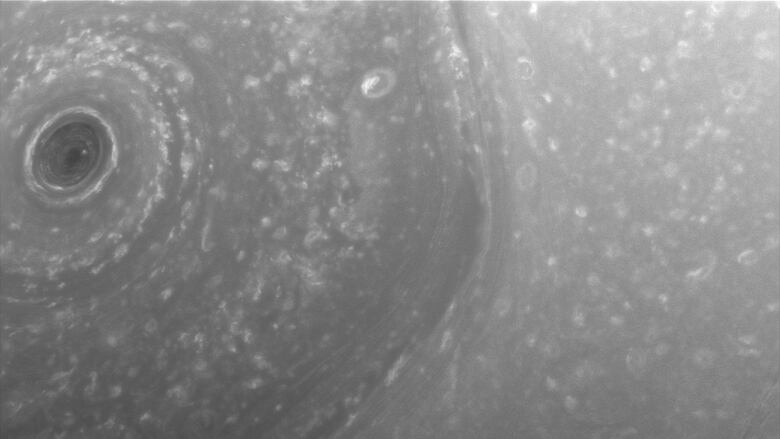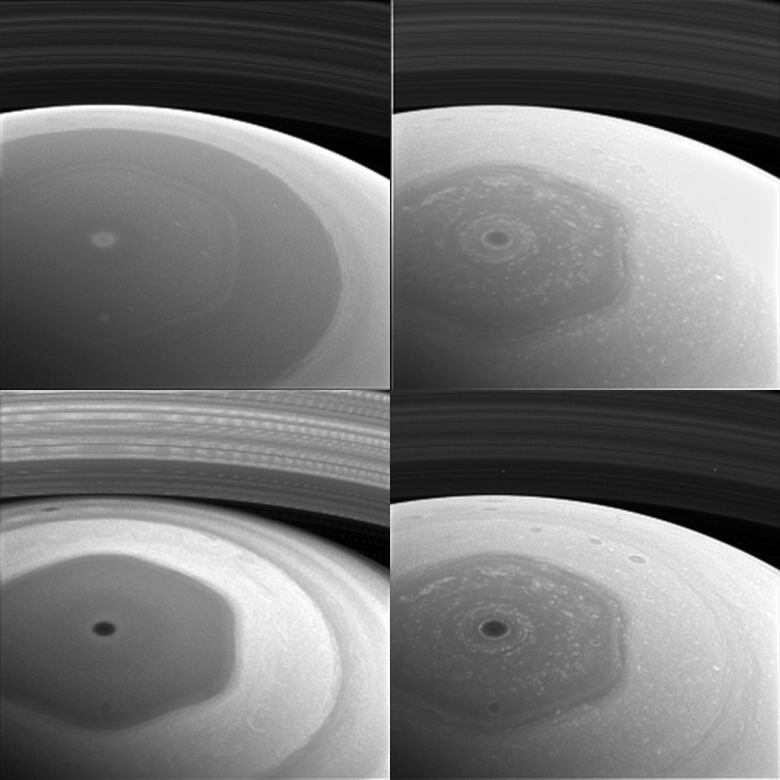Cassini sends back 1st images from new orbit around Saturn
Spacecraft set to return unprecedented photos of planet's ring system and small moons

NASA's Cassini spacecraft has sent back stunning close-up images of Saturn from its new orbit.
The spacecraft, which has been at Saturn since 2004, recently entered a new ring-grazing orbit around the planet.
While in its new territory, Cassini will study the rings which extend up to 282,000 kilometresfrom the planet and range in size from small grains to a few as big asmountains in unprecedented detail.
The new images of Saturn's northern hemisphere were taken on Dec. 2-3, just before the spacecraft was set to buzz past the rings. Cassini will pass the outer rings on Dec. 11 and continue to do so until April 22.
Featured prominently in the new images is the planet's hexagonal polar storm, believed to be caused by a jet stream in its upper atmosphere.

Eventually, Cassini's orbit will take itpast Titan, Saturn's largest moon. Thenthe spacecraft will begin what is being dubbed the "Grand Finale," whenit will travel 22 times between the planet and its innermost ring until April 26.
Finally, on Sept. 15, it will plunge into Saturn. As it does so, it will transmit valuable data back to Earth aboutthe planet's atmosphere.
The death dive into the planet is to ensure that it doesn't crash into moons such as Enceladus or Titan, which could potentially harbour microbial life.
"This is it, the beginning of the end of our historic exploration of Saturn," CarolynPorco,Cassiniimaging team lead at Space Science Institute, said in a statement. "Let these images and those to come remind you that we've lived a bold and daring adventure around the solar system's most magnificent planet."
In 2010, Cassiniwas given an extension to its original 2004 mission. That Solstice Missionallowed scientists to study seasonal changes on the planet. It also provided a new "pale blue dot" image of Earth taken from orbit.













_(720p).jpg)


 OFFICIAL HD MUSIC VIDEO.jpg)
.jpg)



























































































